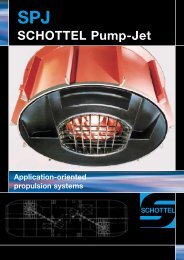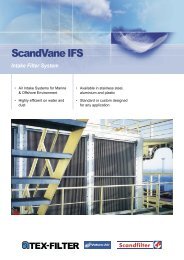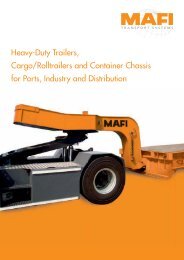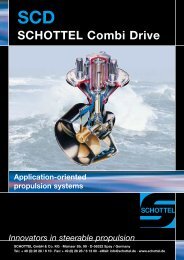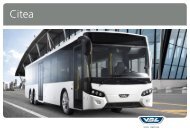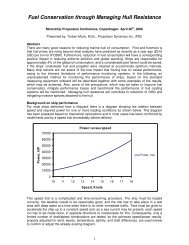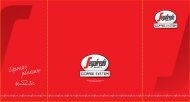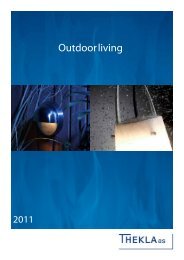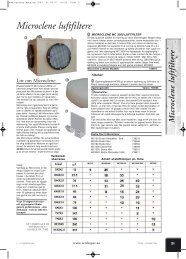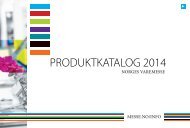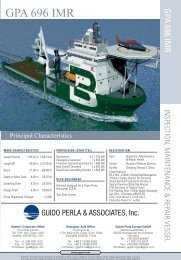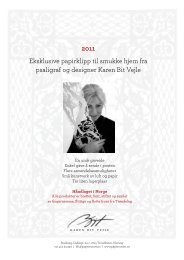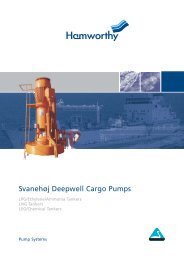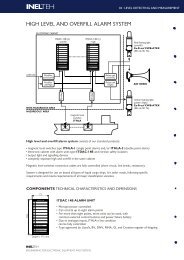DIWA.5 Combining Ride Comfort with Economy
DIWA.5 Combining Ride Comfort with Economy
DIWA.5 Combining Ride Comfort with Economy
Create successful ePaper yourself
Turn your PDF publications into a flip-book with our unique Google optimized e-Paper software.
Design and operation of the DIWA transmission<br />
The mature design of Voith automatic transmissions is up-to-date <strong>with</strong><br />
the latest technological developments. It is simple, logical and clear.<br />
8 5 4 3 10 2 1 6 7 9<br />
Idling/neutral position,<br />
input clutch open<br />
Starting<br />
DIWA range (stepless), input<br />
clutch and turbine brake are<br />
closing: smooth start <strong>with</strong> high<br />
traction. Rapidly increasing<br />
mechanical power transmission<br />
via differential transmission<br />
(power-split principle).<br />
Illustrated: D 864.5<br />
1 Counter-rotating torque<br />
converter<br />
2 Impeller brake<br />
3 Direct gear clutch<br />
4 Differential gear<br />
5 Input clutch<br />
6 Epicyclical gear<br />
7 Planetary gear unit<br />
<strong>with</strong> lamellar brake for<br />
reverse gear/converter<br />
brake<br />
8 Torsional vibration<br />
damper<br />
9 Heat exchanger<br />
10 Overdrive clutch<br />
The heart of the DIWA transmission is the<br />
hydrodynamic counter-rotating torque converter.<br />
Situated in front of it are the impeller, the direct<br />
gear clutch, the differential transmission, the<br />
input clutch and the overdrive clutch. Behind<br />
the converter, an epicyclical gear combines the<br />
hydrodynamic and mechanical forces.<br />
The final set of epicyclical gears activates the<br />
reverse gear and, during braking, also the retarder.<br />
A hydraulic torsional vibration damper at the transmission<br />
input reduces engine vibrations effectively.<br />
Gear shifting occurs electro-hydraulically,<br />
<strong>with</strong> patented solenoid valves; the gear-shifting<br />
commands are placed by the control system.<br />
The heat exchanger of the Voith automatic transmission<br />
is integrated into the cooling circuit of the<br />
vehicle engine; generated heat is immediately dissipated.<br />
The transmission oil circuit is designed as<br />
a full flow system ensuring that the oil temperature<br />
and transmission components run and operate<br />
as cool as possible. Even when the vehicle’s<br />
cooling system is running hot, the temperature of<br />
the transmission remains relatively stable <strong>with</strong> no<br />
danger of overheating.<br />
Performance data <strong>DIWA.5</strong> transmission<br />
Types D 824.5 D 854.5 D 864.5 D 884.5<br />
Input power P 1max<br />
[kW] 180 220 290 320<br />
Input torque M 1max<br />
[Nm] 650 1 100 1 600 1 1 900<br />
Input speed n 1max<br />
[rpm] 2 500 2 500 2 500 2 200<br />
Retarder braking torque M BR<br />
[Nm] 2 000 2 2 000 2 2 000 2 2 000 2<br />
Transmission mass (dry)<br />
incl. retarder<br />
[kg]<br />
approx.<br />
329<br />
approx.<br />
334<br />
approx.<br />
339<br />
Max. vehicle weight [t] 15 28 28 34 3<br />
approx.<br />
344<br />
4<br />
1<br />
1 700 Nm under certain conditions<br />
2<br />
Maximum value, depending on retarder configuration<br />
3<br />
depending on the axle ratio



